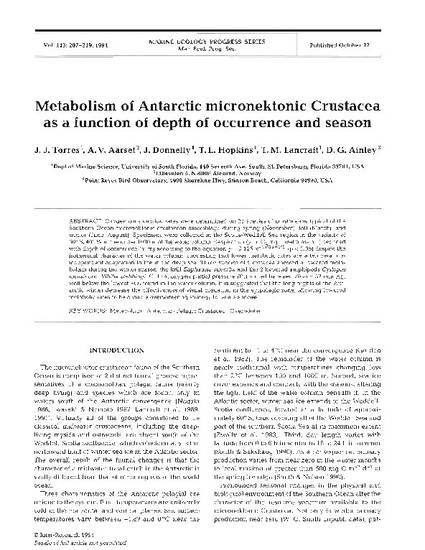
- Metabolism,
- Antarctic,
- Pelagic Crustacea,
- Overwinter
Oxygen comsumption rates were determined on 21 species of crustaceans typical of the Southern Ocean micronektonic crustacean assemblage during spring (November), fall (March), and winter (June-August). Specimens were collected in the Scotia-Weddell Sea region in the vicinity of 60-degrees-S, 40-degrees-W in the upper 1000 m of the water column. Respiration (y, mul O2mg-1 wet mass h-1) declined with depth of occurrence (x, m) according to the equation y = 0.125 x-0.172 +/- 0.052 (p < 0.05) despite the isothermal character of the water column, suggesting that lower metabolic rates are a temperature-independent adaptation to life in the deep sea. Three species of Crustacea showed a lowered metabolism during the winter season: the krill Euphausia superba and the 2 hyperiid amphipods Cyllopus lucasii and Vibilia stebbingi. Critical oxygen partial pressure (Pc) varied between 29 and 52 mm Hg, well below the lowest PO2 found in the water column. It is suggested that the long nights of the Antarctic winter decrease the effectiveness of visual predation in the epipelagic zone, allowing lowered metabolic rates to be a viable overwintering strategy for some species.
Marine Ecology Progress Series, v. 113, p. 207-219
© Inter-Research 1994
Available at: http://works.bepress.com/joseph_torres/8/
